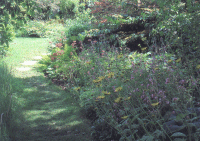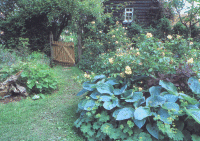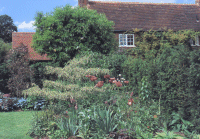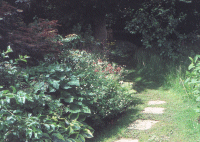|
|
|
This area covers about 2 acres and was a typical 'pony paddock' until 10 years ago.
|
|
Originally a primary meadow, it was ploughed up and sown with a cereal crop - possibly as part of the war effort 60 years ago. After the war it was returned to grazing land, initially for pigs and then for horses. At some point in time, it was harrowed and reseeded with a rich ryegrass mixture suitable for grazing for horses. This over-fertility allowed the grasses to smother the meadow plants.
|
|
When we arrived I wanted to return it to a meadow rich in local flora and started a programme of cutting and removing the hay, mowing out the areas of broadleaf dock and pulling the thistles and other undesirables.
|
|
Our persistence is slowly working, and the meadow is now rich in birdsfoot trefoil, vetches, ox-eye daisy, meadow buttercups and some greater knapweed. We mow out large areas of grass to reduce its strength, which allows flowers to colonise these areas.
|
|
We may not see a return of the flora-rich meadow of the past in our lifetime but hope that we are helping to ensure the survival of the butterflies, bird and animals that both source their food and make their home here.
|
|
The meadow and local fields are home to (amongst others) skylarks, barn owls, tawny owls, little owls, kestrels, buzzards and woodpeckers. There are muntjac and fallow deer and all manner of hares, rabbits, mice and voles, which in turn attract the predators such as stoats and weasels. Along with the peacock caterpillars on the nettles, there are skippers and browns.
|
|




|







